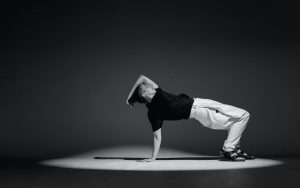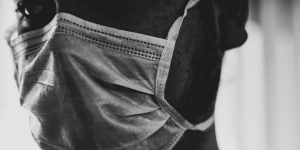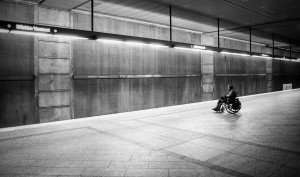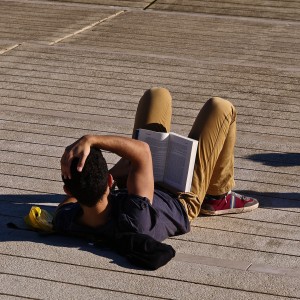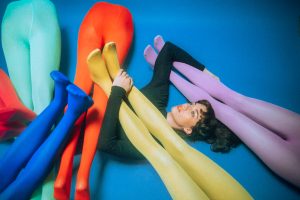Deafness and dance: Q&A with Elvin Lam
By: Jasmine Shirrefs
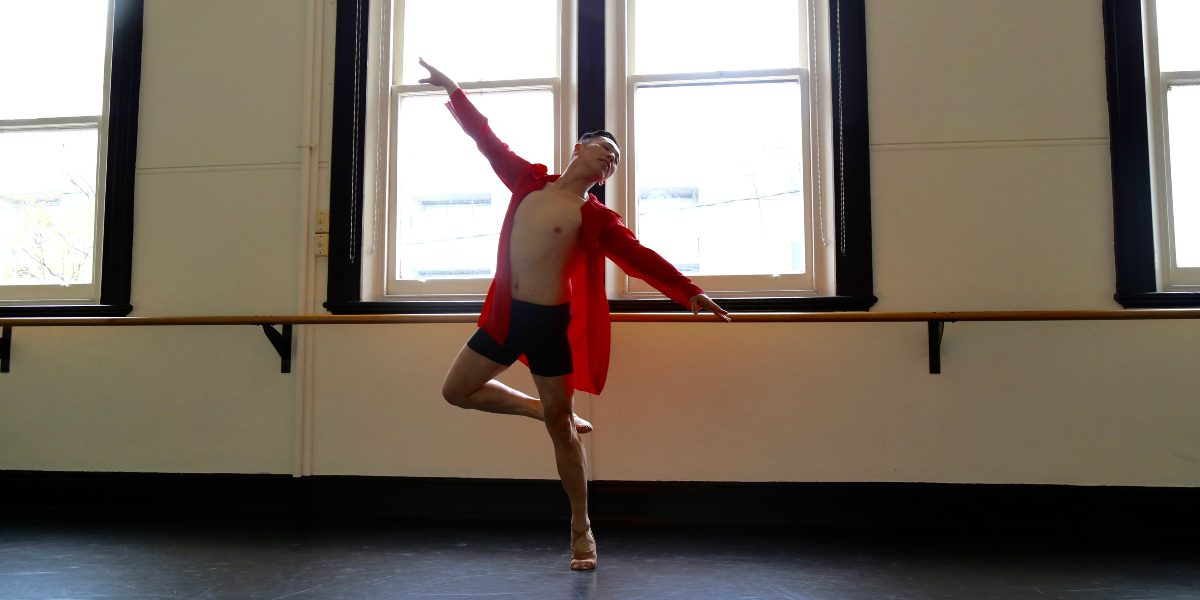
Elvin Lam is a Deaf dancer based in Melbourne. Born in Hong Kong, Elvin moved to Melbourne two decades ago to study at university and embrace his queer identity. Before Elvin strapped on his first pair of dancing shoes in his teenage years, he had trained and competed in figure skating for 10 years.
In this interview, originally published in Archer Magazine #16, the DISABILITIES issue, Elvin caught up with Jasmine Shirrefs to discuss deafness, dancing and how the pandemic has changed the way he moves and connects with audiences.
Image by: Sophia Bender
I met Elvin over Zoom, with notetaker Thomas and Auslan interpreter Kirri. Our interpreter Kirri was held back at their previous job, which was unsurprising – Australia has had an interpreter shortage since the 1970s.
Elvin and I chatted briefly in Auslan about plodding along in the pandemic. He asked why I wouldn’t conduct the interview in Auslan, and I explained I had never studied translation and I was aware I needed to get the text into English instead of multimodal communication.
I kept looking at everyone’s little faces on the screen, at their homes and their furniture, and thinking about how bedrooms have become the new office.
Note: The medical condition of varied hearing range is referred to as ‘deafness’. We will utilise ‘Deaf’ with a capital to denote the linguistic and cultural group of Deaf people. We recognise that there is a spectrum of identities across those with deafness.
Jasmine Shirrefs: This issue of Archer Magazine focuses on disabilities. I’m wondering if you identify as disabled.
Elvin Lam: I have a few different identities. Number one, my identity is Deaf. A lot of our community think that deafness is different to identifying as having a disability – it’s a culture and distinct identity.
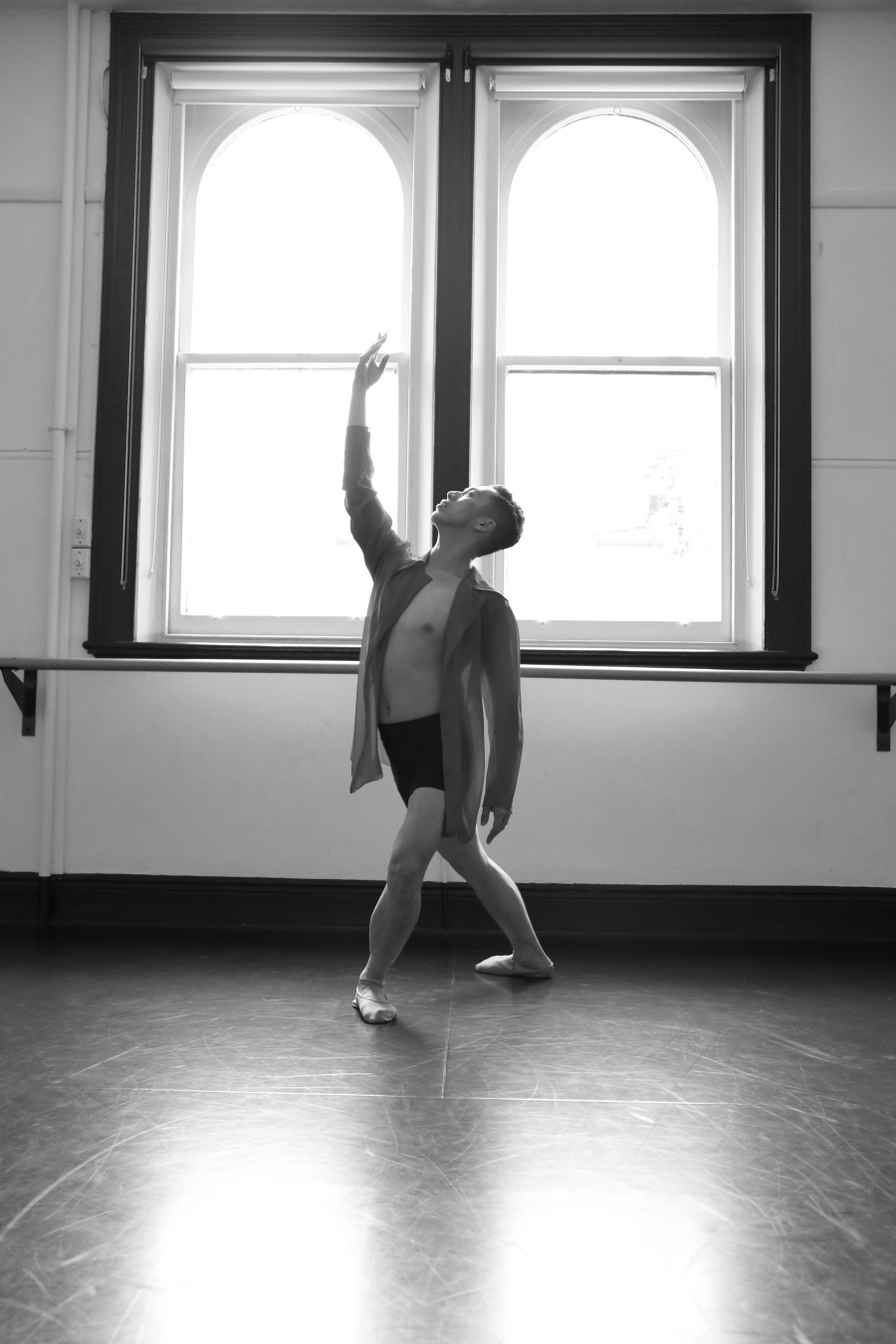
Image by: Sophia Bender
JS: How has the pandemic changed your relationship to space? What does it mean to be a dancer without a physical space to rehearse and perform? What does it mean to be Deaf and for your language, Auslan, to lose a dimension?
EL: I need to think about where my body is within space and how can I move while remaining on screen. I need to keep looking straight forward and it can be hard to maintain eye contact.
With performance, trying to gauge how the audience is feeling is quite hard. Sometimes they sit up very close to the screen and ogle a little and it’s difficult to understand. I feel as though the camera is the audience. We are performing for the little circle at the top of the computer.
As a Deaf person, movement is such a huge part of my life. I guess I’ve needed to explore more about how dance is connected to Deafness, and how dance is connected to body language.
JS: Do you find it hard to date as a Deaf and queer man?
EL: It is difficult because the Deaf community is very small, and then if we think about the Deaf queer community, that is even smaller. So it is hard to find someone, because we already know each other. Being around each other, we do feel safer, but there are very few of us.
Before I met my partner, I was dating online. I always disclosed that I’m a Deaf person, which helped to filter through people who have genuine interest and a good attitude.
It means I met people who were more willing to work together on the language barrier rather than just me always putting the first foot forward. Including deafness in my profile has aided me.
JS: How do you connect to music?
EL: I think every Deaf or hard-of-hearing individual connects to music differently. In ballet training, I can feel the music and connect with its heaviness or lightness. Contemporary can be a little more difficult. We can feel the bass at a loud volume but perhaps not the intended feeling of the music itself.
Through dance, I always follow my own gut instinct, I follow my own memories, my own thoughts of what the dance is, what the movement is and what that means to me. The music is in my mind. It’s like the dance is showing the feeling and movement to me.
There’s a musicality in that, whether I’m moving slowly or fast or showing an emotion that is attached to that. Movement can be my music.
JS: Do you have a subwoofer? I wonder if the National Disability Insurance Scheme (NDIS) would allow that.
EL: I wish. I can’t do that – I don’t want the neighbours to complain.
JS: Have you ever worked with someone to design your own music?
EL: Yes, a while ago I was in a group called Deaf Can Dance and we had a music piece that was developed by a hard-of-hearing DJ, which followed our movements as dancers.
I was also part of The Delta Project’s Under My Skin. The Delta Project was co-founded in 2012 by Deaf dance artists Jo Dunbar and Anna Seymour with support from Arts Access Victoria (Seymour is the current Artistic Director). In Under My Skin, the music was created specifically for us.
The delta is a visual and physical metaphor for Deaf and hearing worlds merging together, and The Delta Project built from this momentum to experiment and create works that explored hidden stories and voices, and encouraged new dialogues and connections to emerge in dance and performance.
Under My Skin had sounds as well as projections. There were various colours and lights that notated the music. This was perfect for audience members to get a full sensory experience of the music involved in our piece.
JS: I feel that storytelling is important in Deaf culture because we don’t have the same access to archives as some mainstream populations. Often a lot of the technologies to capture video phase out quite quickly. Do you think dancing is a form of storytelling that can be used to capture history?
EL: With ballet, it does not matter if you are hearing or Deaf. The story unfolds through the dancers’ movement and gestures. I think the combination of the body in movement and the facial expressions helps to create meaning in dance.
Facial expressions or non-manual features are an integral part of Auslan and my identity as a Deaf person, and this helps me to relay meaning to the audience in my own performances. Different speeds of dance can assist in conveying emotion.
If I am trying to convey sadness, I may slowly dance with heaviness. When I am trying to convey happiness, I may dance faster and lighter. I think with ballet, both hearing and Deaf audiences have the opportunity to understand the emotions. I feel contemporary dance is very much connected to emotion, and emotion can be quite connected to history and memory.
Under My Skin (with Anna Seymour, an incredible Deaf dancer) involved a lot of initial research about how emotions are projected. The piece was really open, honest and direct. It was about unpacking the expression of raw emotions and the times we felt we needed to suppress and mask our emotions.
I think in the 1980s there was some discomfort and embarrassment involved with someone presenting their emotions, and this has changed over time.
JS: What is it about ballet particularly that draws you?
EL: I’ve tried other dance genres: I’ve tried hip hop, jazz, contemporary. I enjoy all forms of dance, but ballet is something special and beautiful. It shows a story without talking. When I was younger my mum went with me to watch a ballet performance, The Nutcracker.
Before seeing ballet, I was always really frustrated with various performances because people would be standing there singing and I would have no idea what they were talking about. I couldn’t follow the story, there were no interpreters – it just wasn’t accessible to me.
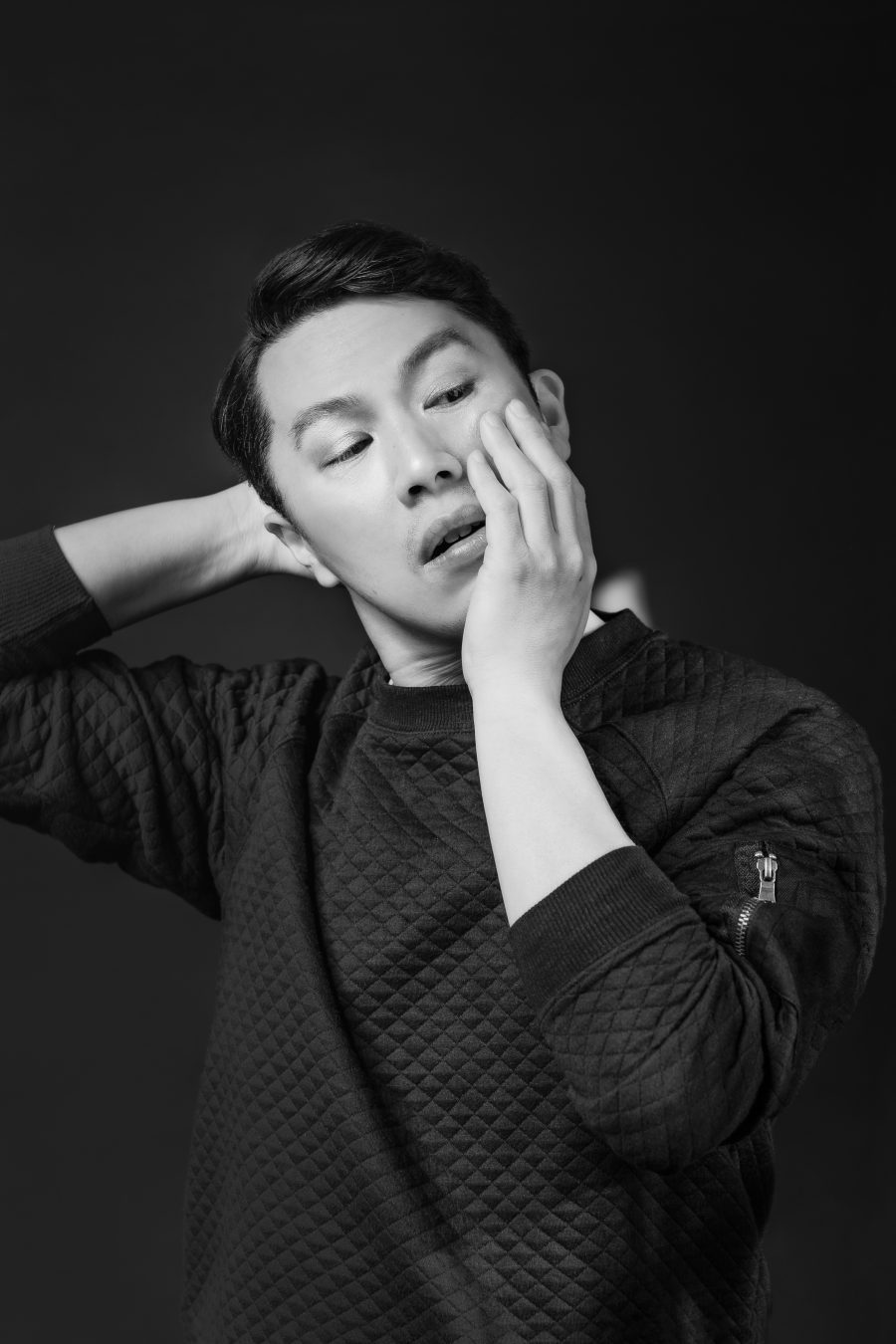
Image by: Alexis Desaulniers-Lea
JS: For a while there I think opera was my favourite performance to go and see because they had captions when it was sung in a language other than English.
EL: That’s right, absolutely. Also, foreign films always have captions. Open captions, not just closed; much better.
JS: CaptiView is a nightmare.
EL: So frustrating. The captions often don’t work, and you can’t tell who is speaking or understand how it syncs with events on screen. Sometimes when I watch theatre and there’s an interpreter on the stage, I just sit and watch the interpreters and I forget about the performance. I miss out on the performance because I’m trying to get the information.
JS: That’s why I like when the interpreter is embedded at all stages of production. Did you see Sam I Am? Sam Martin and Danni Wright were passing language between each other, there was Auslan, captioning and oral English, and it was almost like it didn’t matter what language you were using – you could take in a little bit of everything, and it would create a full story.
EL: I would really love to do something like that in the future.
JS: What projects are you working on at the moment?
EL: I am doing a performance called Face to Face at Midsumma Festival, which is produced by Melody Shotade. I also have seen an increase in online courses during the pandemic; however, not many are accessible owing to no closed captioning. I think I would like to develop a Deaf-led online dancing course that could be attended by a variety of people across Australia.
JS: How are you feeling about the possibilities of arts in the digital space?
EL: I think the presence of interpreters and captioning on screen has really changed access for the Deaf and hard-of-hearing community, and I am hoping this is ongoing. I am currently following a group of Deaf drag queens in America. There’s also a troupe of Deaf drag queens in England, Taiwan, China – various troupes all around the world.
Social media has made Deaf artists and Deaf communities be able to connect regardless of where we are in the world. I think digital spaces are showing us that Deaf people can do a variety of arts mediums and with great professionalism.
Recently I was involved with Flow Festival, which was curated by a group of Deaf community members, but the festival was inclusive of different identities, whether they be queer or straight, disabled or not, Deaf or hearing.
I think everyone should be able to move through the world as they are. I think there is a future where festivals like Flow can involve a global Deaf community. Everyone coming together to create something wonderful.
JS: I can’t wait to see what you get up to next, Elvin. Thanks so much for chatting with me.
Elvin, the access team and I all signed many thanks to one another – taking the hand with fingers straight and gelled together to the chin, then pulling the hand away.
This article first appeared in Archer Magazine #16, the DISABILITIES issue.
Jasmine Shirrefs is a zine-maker, freelance writer and multidisciplinary artist. Jas has written for Growing Up Disabled in Australia released by Black Inc. in 2021. They did a life-writing column for Scum Mag in 2020 and are currently working on a long form non-fiction manuscript about community, identity and shared living arrangements. Jas identifies as queer and Deaf.



